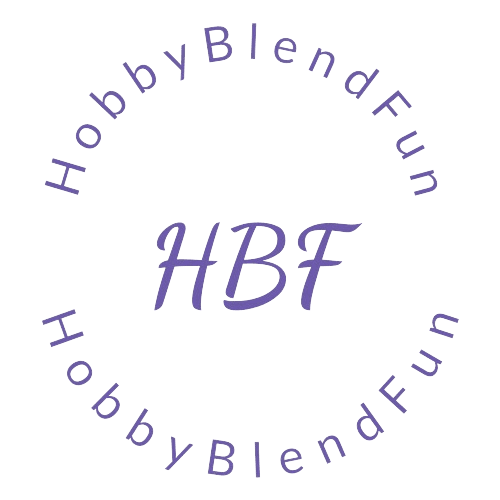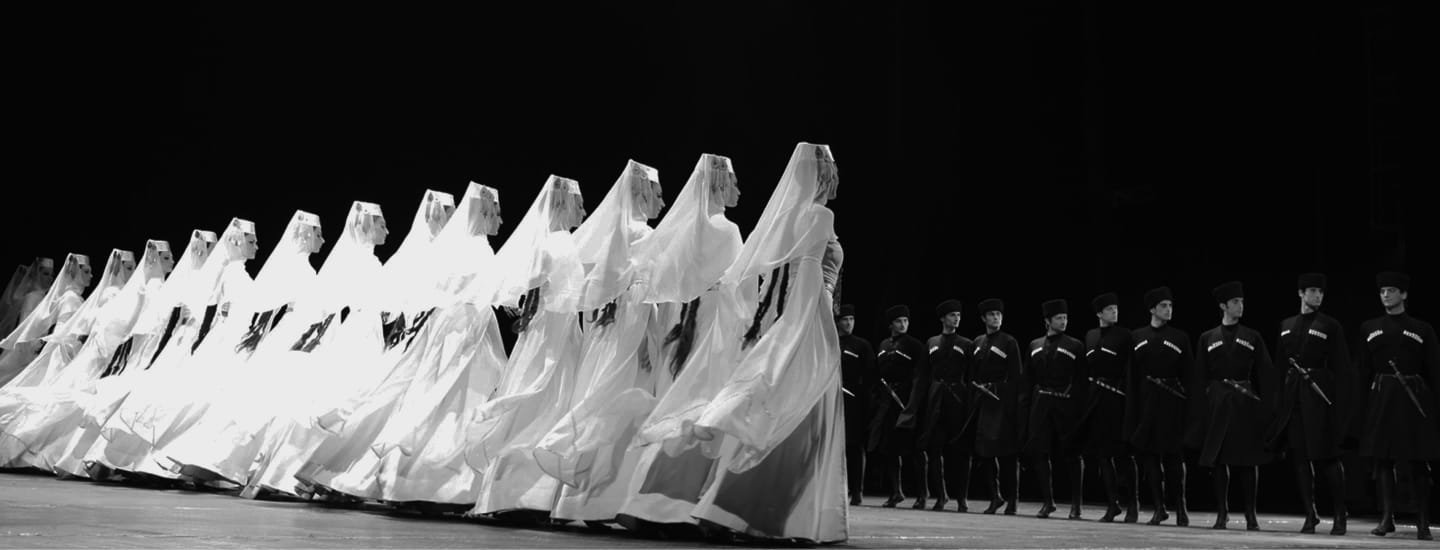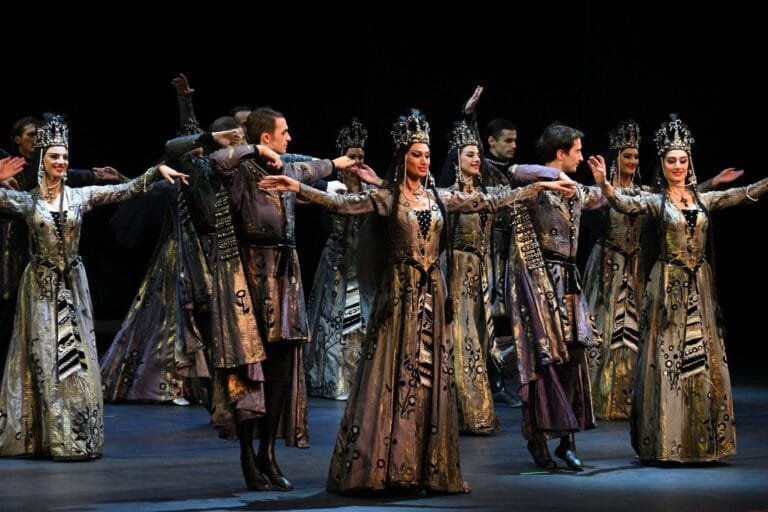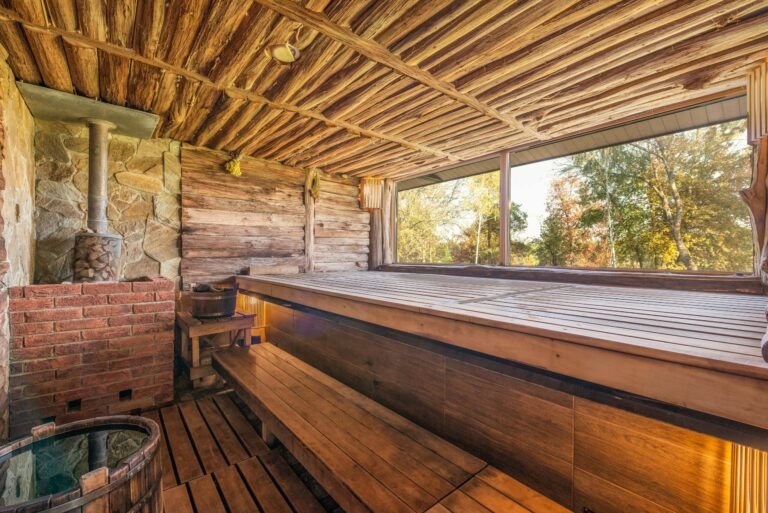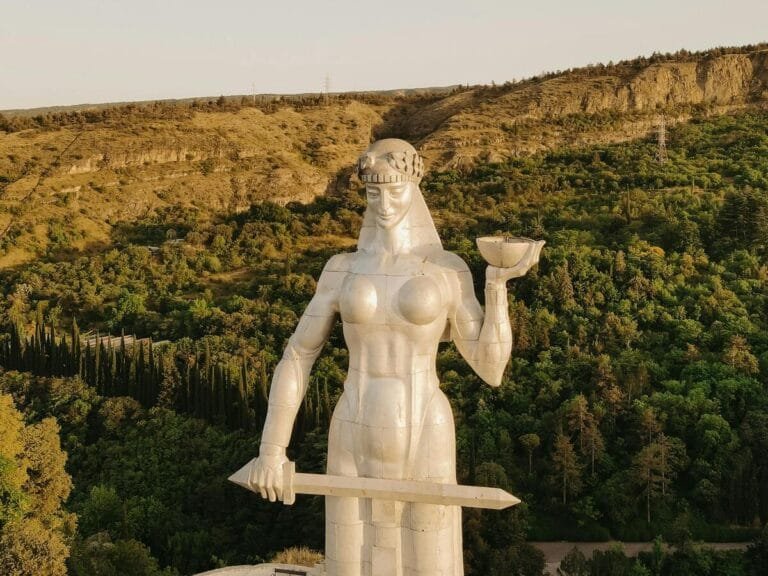Georgian Traditional Dances
I’ve always been fascinated by Georgian traditional dances—their elegance, energy, and storytelling never fail to impress me.
For a while now, I’ve been thinking about sharing more about them, as they truly deserve appreciation.
The art of body movements in Georgia dates back many centuries.
Georgian traditional dances are not just performances; they are expressions of history, identity, and emotion.
When discussing Georgian culture and traditions, folklore and dance always take center stage.
Archaeological finds suggest that Georgian folk dance originated in the 3rd to 2nd millennia BC.
This hypothesis is supported by the Trialeti Bronze Belt and the Trialeti Silver Chalice, discovered in the 2nd millennium BC, which depict scenes of dance.
Each movement and technique in Georgian traditional dance carries its meaning.
Similar to Georgian cuisine, every region of Georgia has its distinctive traditional dance, with varied techniques and music.
Through their graceful movements, Georgians tell a range of stories—including heroic, romantic, and chivalrous tales.
Interestingly, Georgian folk dance is even recognized as part of France’s intangible cultural heritage.
The beauty of Georgian traditional dances shines even more through their stunning costumes.
Georgian traditional dance ensembles are loved not only in Georgia but also in different countries of the world. Notable among them are the legendary Georgian National Ballet Sukhishvili, as well as Erisioni and Rustavi.
Kartuli – The Crown Jewel of Georgian Traditional Dances
Kartuli is the oldest surviving romantic couple’s dance, originating in the 11th–12th centuries.
This theatrical performance embodies love, respect, and restraint, expressed through delicate and controlled movements.
Kartuli is defined by an upright posture and precise gestures.
Strict rules govern the dance: the man must not touch the woman—not even her clothing.
The performance unfolds in four parts: an invitation, a duet, a solo by the woman, and a concluding sequence where they dance together.
The dance follows a 6/8 musical rhythm, further enhancing its elegance.
Khorumi – The Most Famous Warrior’s Dance In Georgian Traditional Dances
Khorumi, an ancient war dance performed exclusively by men, showcases the bravery and discipline of Georgian warriors. Originally danced by a few individuals, it has evolved to include up to fifty performers, though the number must always remain odd.
One dancer leads the group, while the others follow his command.
The origin of Khorumi is considered to be Adjara. However, due to its heroic nature and popularity, it is often mentioned without the region’s affiliation.
Khorumi begins with a small group of warriors scouting the battlefield. As the scene unfolds, reinforcements arrive, leading to an intense battle sequence, culminating in a victorious celebration.
Khorumi’s power, precision, and dramatic storytelling make it one of the most striking Georgian folk dances.
Gandagana – The Adjarian Dance of Love
Adjarian Gandagana captures the unique spirit of life in this region.
Men and women have performed this dance since ancient times.
The men move with strength and energy, while the women’s steps are soft and graceful.
Different ensembles bring their interpretations, adding variety to the performance.
In its original form, the woman initiates the dance.
Gandagana carries an element of competition, as soloists try to outshine each other with dazzling tricks.
Some movements mimic the fluttering of birds’ wings, inspired by the elegant flight of seagulls.
This influence is especially visible in the fluid motions of the women’s hands, adding to the dance’s charm.
No festive gathering in Georgia feels complete without the Adjarian dance. Almost every Georgian can join in, whether they are a professional dancer or not.
Perkhuli – The Ritual Dance of Unity
Perkhuli originated in the pre-Christian era as a sacred ritual dance.
People performed it to honor fertility, worship the sun, and celebrate as a community.
The word perkhuli comes from the word pekhi, meaning “foot” in Georgian.
Dancers create mesmerizing patterns through circular movements and synchronized steps.
Their performance bursts with energy, filled with songs and shouts, welcoming participants of any number and gender.
Perkhuli has many variations, including the Gurian perkhuli, known as Partsa.
This fast-paced dance stands out with its intricate footwork and breathtaking tricks.
Dancers mimic the movements of birds—men leap high into the air with powerful jumps, while women glide gracefully, their steps light and elegant.
Watching them in motion is truly mesmerizing.
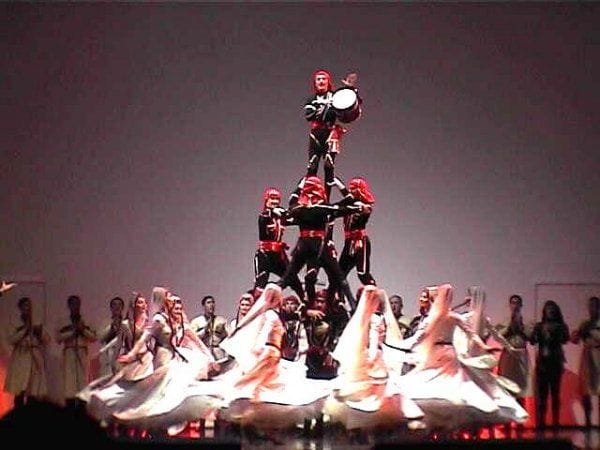
Simdi – The Ossetian Dance
Simdi originates from the ancient region of Ossetia, with its roots tracing back to the era of the Alans.
The original meaning of this dance was ritualistic and sacred.
Researchers indicate that Simdi was performed in rituals associated with the cult of the sun as well as during military training.
The modern choreographic stage version of Simdi was created by Iliko Sukhishvili.
It features slow and careful movements of couples and is typically performed by large groups of dancers simultaneously.
A key aspect of the performance is that the dancers must move synchronously and with precision.
The stern-looking men position themselves alongside the women as a protective presence, demonstrating modesty and respect.
It would not be an exaggeration to describe Simdi as a celebration of refined classical purity and harmony.
Davluri – A Dance of Elegance and Emotion
Among the traditional dances of Georgia, Davluri stands out for its diversity.
It is one of the most elegant and emotionally expressive folk dances in the country.
Traditionally, dancers performed Davluri at weddings, portraying themes of respect, love, playfulness, and flirtation between men and women.
People also recognize Davluri as an urban dance.
While it may resemble the Kartuli dance, Davluri features relatively simple movements. Unlike Kartuli, which primarily involves a couple, Davluri allows multiple dancers to join in.
Davluri dancers wear remarkable costumes that resemble the attire of the Georgian aristocracy.
Notably, the female dancers of the Sukhishvili Ensemble wear outfits that can weigh up to ten kilos.
Samaia – The Dance of Divine Femininity
Samaia is a revered Georgian ritual dance that dates back to the pagan era.
Traditionally performed by women, it symbolizes the Virgin Mary and embodies feminine purity.
Historical records reveal that men and women originally performed it together in two groups.
Today, Samaia stands out as a graceful and refined female dance, known for its airy movements and perfect symmetry.
Iliko Sukhishvili shaped its modern stage version, bringing new life to this ancient tradition.
In his memoir Memories, Sukhishvili shares the story behind the dance’s creation.
During a performance, the production team needed a women’s dance to give male dancers time to change costumes.
After much thought, Sukhishvili found inspiration in the frescoes of Svetitskhoveli Cathedral.
He traveled to Mtskheta with his wife, Nino Ramishvili, and his friend, Soliko Virsaladze, to study these sacred artworks in person.
While examining the frescoes, he noticed one depicting three women standing together. The image triggered his memory of the forgotten dance—Samaia.
This discovery led him to create a choreographic miniature based on the fresco.
Back in Tbilisi, he quickly structured the dance and set it to music from Abesalom and Eteri by Zakaria Paliashvili. In just half an hour, he completed the foundation, and within two to three days, the entire dance took shape.
Lazuri – The traditional Georgian Folk Dance of the Black Sea
Lazuri holds a unique place in Georgian traditional dance, capturing the lives of coastal communities.
It originated in Georgia’s Black Sea region and originally featured only male dancers mimicking fishing movements. Later, women joined, adding elegance and depth to the performance.
Lazuri’s fast and unpredictable footwork makes it stand out. Dancers shift directions suddenly, creating a striking sense of energy and movement.
Traditional Lazuri folk melodies accompany the dance, combining rhythmic beats with electrifying steps. Iliko Sukhishvili Jr. choreographed its stage version, keeping the raw energy of the original form alive.
Rachuli – A Unique And Energetic Georgian Traditional Dance
The Rachuli dance is a vibrant expression of the Racha region’s cultural heritage.
It blends humor with the signature grace of Georgian dance, making it both lively and elegant.
What makes Rachuli unique is its combination of cheerful jumps with slow, gentle movements, creating a striking contrast.
The dance reflects the daily life of the Racha people, bringing their traditions and relationships to life.
Dancers imitate land cultivation, harvesting, hunting, and other everyday tasks, turning work into art.
Rachuli begins with a slow, graceful introduction, where dancers move softly and fluidly.
As the rhythm picks up, the dance shifts into an energetic phase, bursting with faster, more dynamic, and expressive movements.
Musicians accompany the performance with a fast-paced, rhythmic melody played on traditional Georgian folk instruments like the panduri, chonguri, salamuri, and nagara.
Folk songs often add another layer of depth to the performance.
Kintouri – The Colors of 19th-Century Tbilisi in Dance
Kintouri isn’t just a dance—it embodies the spirit of old Tbilisi.
This dance reflects the urban life of 19th-century Tbilisi, drawing inspiration from the Kintos, the city’s small merchants and street vendors.
Who were the Kintos?
Kintos roamed the streets of Tbilisi, selling goods and entertaining people with their witty speech. They stood out with their distinctive clothing—colorful trousers, wide shirts, and small hats.
Their signature style became an essential part of the Kintouri dance, influencing both the movements and costumes.
Dancers perform Kintouri to a lively, rhythmic melody infused with urban energy, capturing the vibrant atmosphere of old Tbilisi.
Svanuri – The Strength of the Mountains in Dance
Svaneti, a mountainous region of Georgia, gave birth to Svanuri, a dance that embodies resilience and the love of freedom.
Traditionally performed by men, Svanuri reflects ancient martial rituals through its powerful and precise movements.
The dance requires extraordinary skill. Dancers balance on their toes, demanding both strength and flexibility.
They perform solo, in pairs, or as a group, always adhering to traditions passed down for generations.
One of Svanuri’s most striking features is its strict posture. The dancer keeps his right hand on the hilt of his dagger and his left on the scabbard, never using his arms for movement.
Despite its intensity, Svanuri emphasizes respect. Dancers remain composed, treating each other with dignity, and end each performance by nodding in acknowledgment.
The sharp, rhythmic melody often includes Svan polyphonic songs like Lile, adding to its raw, powerful energy.
Tsdo – A Mesmerizing Georgian Dance Created by Iliko Sukhishvili Jr.
One of my favorite Georgian traditional dances is Tsdo.
If you ever get the chance to watch a Tsdo performance, get ready for a breathtaking spectacle.
Iliko Sukhishvili Jr. created this dance, drawing inspiration from the traditional dances of Georgia’s mountainous regions.
Only men perform Tsdo, and their movements and tricks are nothing short of mesmerizing.
What makes this dance truly unique is the way dancers move—performing intricate steps entirely on their knees.
Their costumes stand out as well. Unlike the usual way of wearing a chokha (Georgian traditional clothing), the dancers tuck their skirts into their belts, giving the outfit a distinct look.
Iliko’s sister, Nino Sukhishvili, designed these costumes. As the costume designer and producer for the Sukhishvili Ensemble, she brought her artistic vision to life, adding another layer of authenticity to the performance.
Mtiuluri – The Fiery Dance of Mountain Warriors
Mtiuluri captures the fearless spirit of Georgia’s mountain people.
This dynamic, high-energy dance showcases both strength and playfulness, blending athleticism with artistic expression.
Men dominate the performance, demonstrating power, courage, and endurance. However, women also take part in certain moments, adding elegance and balance.
The dance tells a subtle story of relationships. While men perform bold, fast-paced movements, women counterbalance them with grace and poise, symbolizing harmony between the two forces.
Mtiuluri’s most defining elements include breathtaking jumps, rapid spins, and sharp, commanding gestures.
Traditional instruments like the chonguri, nagara, and salamuri accompany the dance, reflecting the unpredictable and adventurous life of the mountains.
Ilouri – A Unique Georgian Dance Inspired by Lekuri
The Ilouri dance gets its name from Iliko Sukhishvili (Ilia) and includes elements of the Lekuri dance.
Nino Sukhishvili says this dance means a lot to her because her grandparents, Iliko Sukhishvili and Nino Ramishvili, performed it.
Lekuri, a well-known dance across the Caucasus, stands out for its fast and energetic movements. Dancing Ilouri takes skill and demands a high level of technique.
The dance has a rich history. In 1937, during the Decade of Art in Moscow, something incredible happened at the Bolshoi Theater.
Iliko and Nino, dressed in traditional white chokha, performed Ilouri, and the audience loved it so much that they demanded an encore.
This broke tradition at the Bolshoi, where even the most famous performers usually danced only once. The entire Soviet Politburo watched and thoroughly enjoyed the performance.
Years later, Iliko Jr. revived the dance, continuing the legacy of his family.
Parikaoba – The Georgian Dance of Warrior Training and Combat
Parikaoba, an ancient Georgian traditional dance, transforms the stage into a battleground. This performance brings to life the rigorous training and fighting rituals of warriors, making it both dramatic and breathtaking.
Executing Parikaoba requires extreme precision. Every movement mirrors an actual battle, choreographed to perfection. The dancers clash in an intense yet elegant fight, their acrobatic movements and calculated tricks amplifying the spectacle.
A fast-paced and energetic melody fuels the performance, with the nagara drum playing a dominant role. The rhythm mimics the sound of clashing blades, adding even more drama to the fight.
If you ever witness Parikaoba on stage, expect an unforgettable experience filled with raw intensity and mesmerizing skill.
Khevsuruli – A Spectacular Georgian Battle Dance
Khevsuruli embodies the strength and dignity of Georgia’s mountain people. This dance highlights the Georgian man’s chivalrous attitude toward women, blending love, masculinity, and respect into a captivating performance.
Due to its complexity, Khevsuruli demands rigorous practice and mastery. The dance begins with a flirtatious exchange between a man and a woman, only to be interrupted by a rival suitor. What starts as a playful courtship quickly escalates into a dramatic hand-to-hand fight.
As the rivals engage in an intense battle, the woman steps in, tossing a handkerchief to separate them.
Though she briefly restores peace, the fight resumes as soon as she leaves the scene.
In the end, the women once again intervene, ensuring the confrontation ends without violence.
With its fast-paced choreography and emotional depth, Khevsuruli remains one of Georgia’s most thrilling and symbolic dances.
Jeirani – The Iconic Georgian Dance Masterpiece by Nino Ramishvili
In Georgia, mentioning Jeirani immediately evokes admiration for Nino Ramishvili’s legendary masterpiece. Every female dancer dreams of performing this breathtaking piece, which demands elegance, emotion, and exceptional physical strength.
Jeirani combines classical ballet techniques with dynamic hunting rituals, blending elements of Georgian and Eastern cultures. The dancer moves with soft, fluid grace, transitioning from delicate motions to increasingly dynamic sequences as the rhythm intensifies.
The beauty, elegance, and sophistication of Jeirani leave a lasting impression. Watching it performed live is nothing short of mesmerizing.
Georgian Traditional Dances
Even if you are not deeply into dance or choreography, Georgian traditional dances have a unique way of captivating any audience.
Each region of Georgia has its distinct dances, yet they all share the same essence—heroism, tenderness, passion, and freedom.
Georgian dance is more than movement; it is the heartbeat of the nation, carrying its history, emotions, and spirit onto the stage.
